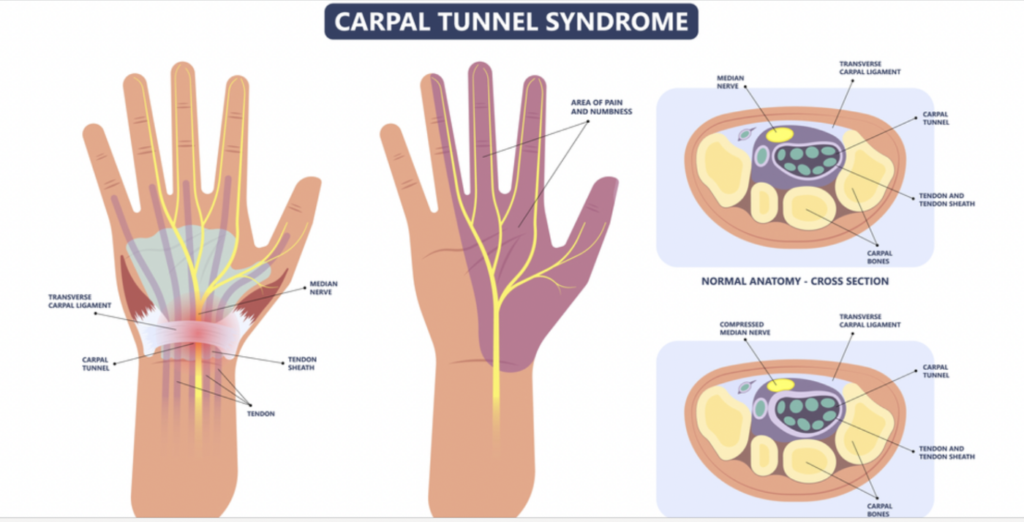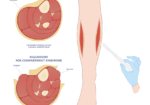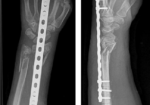Carpal Tunnel Release: Outcomes of Pediatric and Adolescent
Filed under Diagnoses
Rapid Review. Outcomes of pediatric and adolescent carpal tunnel release based on etiology.
Velicki, K., Goldfarb, C. A., Roberts, S., & Wall, L. B. (2021). Outcomes of pediatric and adolescent carpal tunnel release. The Journal of Hand Surgery, 46(3), 178-186.
The Skinny: Less than 1% of pediatric carpal tunnel is idiopathic in nature, compared to adults where the majority of carpal tunnel is idiopathic. Limited studies have looked into the surgical outcomes of pediatric carpal tunnel release and there have been no studies comparing outcomes based on the etiology of symptoms.

In the Weeds: Twenty-three patients with 26 surgeries were enrolled in the study and grouped based on the etiology: All of these patients had hand median nerve pain or other symptoms such as numbness and tingling indicating carpal tunnel syndrome.
| Etiology | Number of Hands |
| Lysosomal storage disease | 11 hands |
| Idiopathic | 6 hands |
| Acute traumatic | 7 hands |
| Delayed traumatic | 5 hands |
| Tumorous | 2 hands |
Outcome measures included the Boston Carpal Tunnel Questionnaire (BCTQ), and Patient-Reported Outcomes Measurement Information System (PROMIS) scores.
Bringing it Home: The median age for surgery was 12.7 years (range 2.5 – 23.3). All patients with tumorous etiology and acute trauma had resolution of symptoms. Those with delayed and idiopathic etiology experienced recurrent symptoms. Patients with lysosomal storage disease all experienced the gradual return of their symptoms with 2 of the patients undergoing revision carpal tunnel release.
In acute cases, carpal tunnel release was very successful in relieving median nerve pain in the pediatric population, but not always in the delayed traumatic. Approximately 50% with idiopathic carpal tunnel experienced resolution of symptoms. With lysosomal storage disease, the patient experienced relief for a few years.
Rating ⅘
There were multiple limitations in the study including a limited number of participants in each category. There was also some diagnostic uncertainty, as some of the diagnosis was based on the clinician’s judgment. Lastly, phone interviews and chart reviews were utilized to obtain outcomes data, so there were various means utilized to obtain the data, in which the interviewer could have influenced the outcomes.
More To Read
Exertional (Chronic) Compartment Syndrome of The Hand
By: Tommi Long What is it? Chronic exertional compartment syndrome (CECS) is an exercise-induced condition affecting the muscles and nerves, leading to pain, swelling, and reduced muscle function due to increased pressure and restricted circulation. While most commonly, it impacts the arms and legs, it is rare to happen in the hand(s). CECS is most…
Read MoreOutcomes of Dorsal Bridging Plates
Outcomes of Dorsal Bridging Plates Fares, A. B., Childs, B. R., Polmear, M. M., Clark, D. M., Nesti, L. J., & Dunn, J. C. (2021). Dorsal Bridge Plate for Distal Radius Fractures: A Systematic Review. The Journal of Hand Surgery. https://doi-org.methodistlibrary.idm.oclc.org/10.1016/j.jhsa.2020.11.026 The Skinny Distal radius fractures (DRF) are a common injury that we see in…
Read MoreTaking Alpha-Lipoic Acid for 40 days after Carpal Tunnel Surgery can decrease the likelihood of developing Pillar Pain.
Filippo, B., Granchi, D., Roatti, G., Merlini, L., Sabattini, T., & Baldini, N. (2017). Alpha-lipoic acid after median nerve decompression at the carpal tunnel: A randomized controlled trial. The Journal of Hand Surgery, 4, 236–42. The Skinny – A double-blind, randomized controlled study was performed. Sixty-four patients were randomly assigned into two groups after median…
Read MoreSesamoid Bones: What are they and what do they do?
By Brittany Carrie A Student’s Perspective During the first few weeks of my rotation, I was exposed to many new and exciting things that I had not been exposed to in the classroom setting. I observed and helped treat patients who had undergone severe trauma from lacerating tendons to complete amputations, saw different splinting techniques,…
Read MoreSign-up to Get Updates Straight to Your Inbox!
Sign up with us and we will send you regular blog posts on everything hand therapy, notices every time we upload new videos and tutorials, along with handout, protocols, and other useful information.






